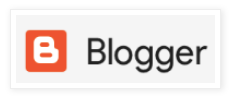The forcepoint Security Management Center allows for you to query logs. One issues, logs can easily be pruned but no on board features for log rollup to a remote-server like a SFTP/SCP.
Here's a quick script that will allow you to run a script via cron job and on a regular interval to rollup logs from the SMC logServer to a remote scp. This a bash script
/bin/bash
#
# kfelix@socpuppets.com
######## LOG ROLLER IT ON UP ########
# rev 1.0
#
D=`date +Y%y_Moth%m_Day%d_%s`
#
H1="<insert the rollup SFTP/SCP server name here >
H2="<insert the rollup SFTP/SCP server name here >
# find all files older than 180days in the /usr/local/forcepoint/smc/data/storage/
LOG_DIR="/usr/local/forcepoint/smc/data/stor
age/"
find $LOG_DIR -name "*.arch" -mtime +180 > /tmp/logsarchs
# take archive list and create tarball.gz
tar czvf ROLLUP.$D.tar.gz --files-from /tmp/logsarchs
# delete listed files
cat /tmp/logsarchs | xargs rm -f
# delete logsarchs catalog text file
rm /tmp/logsarchs
#
# install at least two rollup destinations
scp ./ROLLUP.$D.tar.gz rollupusername:userpassword@$H1/
scp ./ROLLUP.$D.tar.gz rollupusername:userpassword@$H2/
#
# rm old archive gz tarball to clear up space
rm -i ROLLUP.$D.tar.gz
This can help on storage issues or before you have storage issues. You could even set a trigger based on the diskutilizaion % and have the script fire off if the disk% is 75% or more
e.g
C=` df -H | grep centos | awk '{ print $5 }' | cut -d % -f 1 `
if [ $C -lt 75 ]; then
exit
elif [ $C -gt 75 ] ; then
echo " Disk Usage is High at $C% utilization on $HOSTNAME " | mail -s " LogRoller SMC " socteam_maillist@socpuppets.com
D=`date +Y%y_Moth%m_Day%d_%s`
#
H1="<insert the rollup SFTP/SCP server name here >
H2="<insert the rollup SFTP/SCP server name here >
# find all files older than 180days in the /usr/local/forcepoint/smc/data/storage/
LOG_DIR="/usr/local/forcepoint/smc/data/stor
age/"
find $LOG_DIR -name "*.arch" -mtime +180 > /tmp/logsarchs
# take archive list and create tarball.gz
tar czvf ROLLUP.$D.tar.gz --files-from /tmp/logsarchs
# delete listed files
cat /tmp/logsarchs | xargs rm -f
# delete logsarchs catalog text file
rm /tmp/logsarchs
#
# install at least two rollup destinations
scp ./ROLLUP.$D.tar.gz rollupusername:userpassword@$H1/
scp ./ROLLUP.$D.tar.gz rollupusername:userpassword@$H2/
#
# rm old archive gz tarball to clear up space
rm -i ROLLUP.$D.tar.gz
fi
Remember a predefine alert exists for local Management disk usage if the LogServer is local to the MgtServer
NSE ( network security expert) and Route/Switching Engineer
kfelix -----@---- socpuppets --- "*"---com
^ ^
=( @ @ )=
o
/ \


















